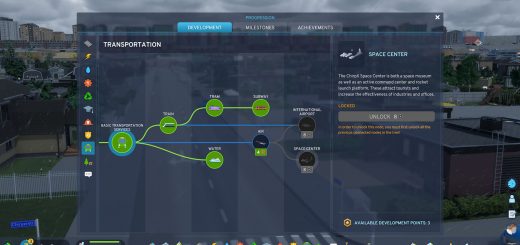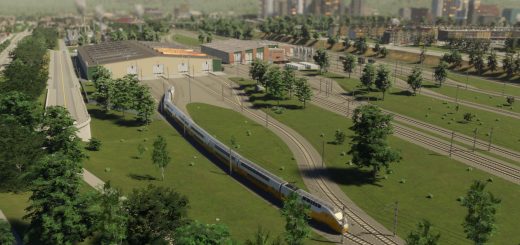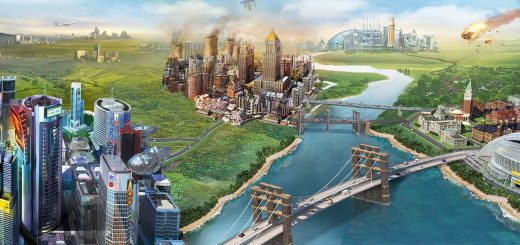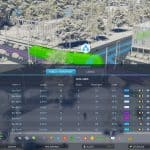
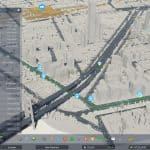
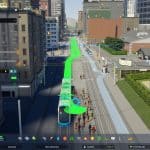

Cities Skylines 2: Transportation Overview
The Transportation Info View is a comprehensive resource that consolidates essential information about passenger and cargo traffic. The data is neatly categorized into two sections.
In the passenger transportation data section, you will find details such as the number of lines available in the city, the count of tourists transported, and the overall number of passengers transported in a month for each type of transportation.
The cargo section, on the other hand, specifically lists the number of cargo lines. Additionally, it provides important insights into the amount of cargo being transported in tonnes per month, categorized by transport type.
Moreover, the Transportation Info View goes above and beyond by visually highlighting all the lines operating in the city. This enables you to easily identify and locate transport vehicles. The vehicles are marked with clear icons, making it convenient to gauge the current volume of vehicles and their locations. With this feature, you can obtain a comprehensive overview of the city’s transportation system.
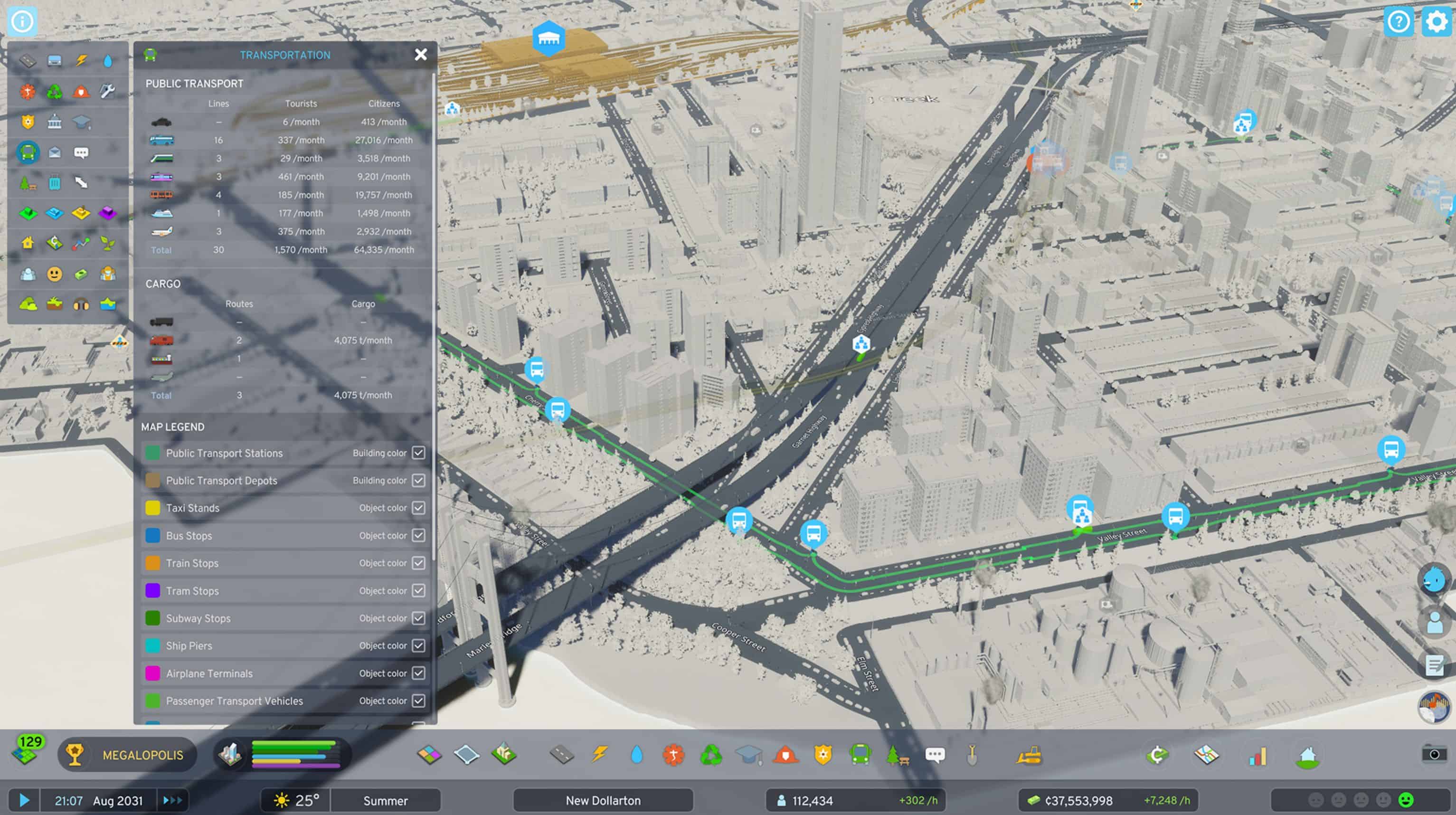
You can customize what is shown on the info view to easily find where a specific transport option is located
The Transportation Overview panel provides a comprehensive view of all transportation lines, categorized into two main groups: passenger and cargo transportation. Each category is further divided into specific transport types. This panel offers a convenient way to quickly grasp the essential information about each line.
With the Transportation Overview panel, you have the flexibility to personalize your lines. You can easily rename, activate, or deactivate them, and even change their identifying colors directly from the panel. By clicking on the Line Details button, you can access more in-depth information about each line. This opens up the Line panel, where you can make further adjustments and modifications.
The overview panel proves to be extremely useful, especially when you need to check the line usage percentages and optimize the different transportation types. It allows you to efficiently analyze and optimize the performance of each line, ensuring an effective transportation system.
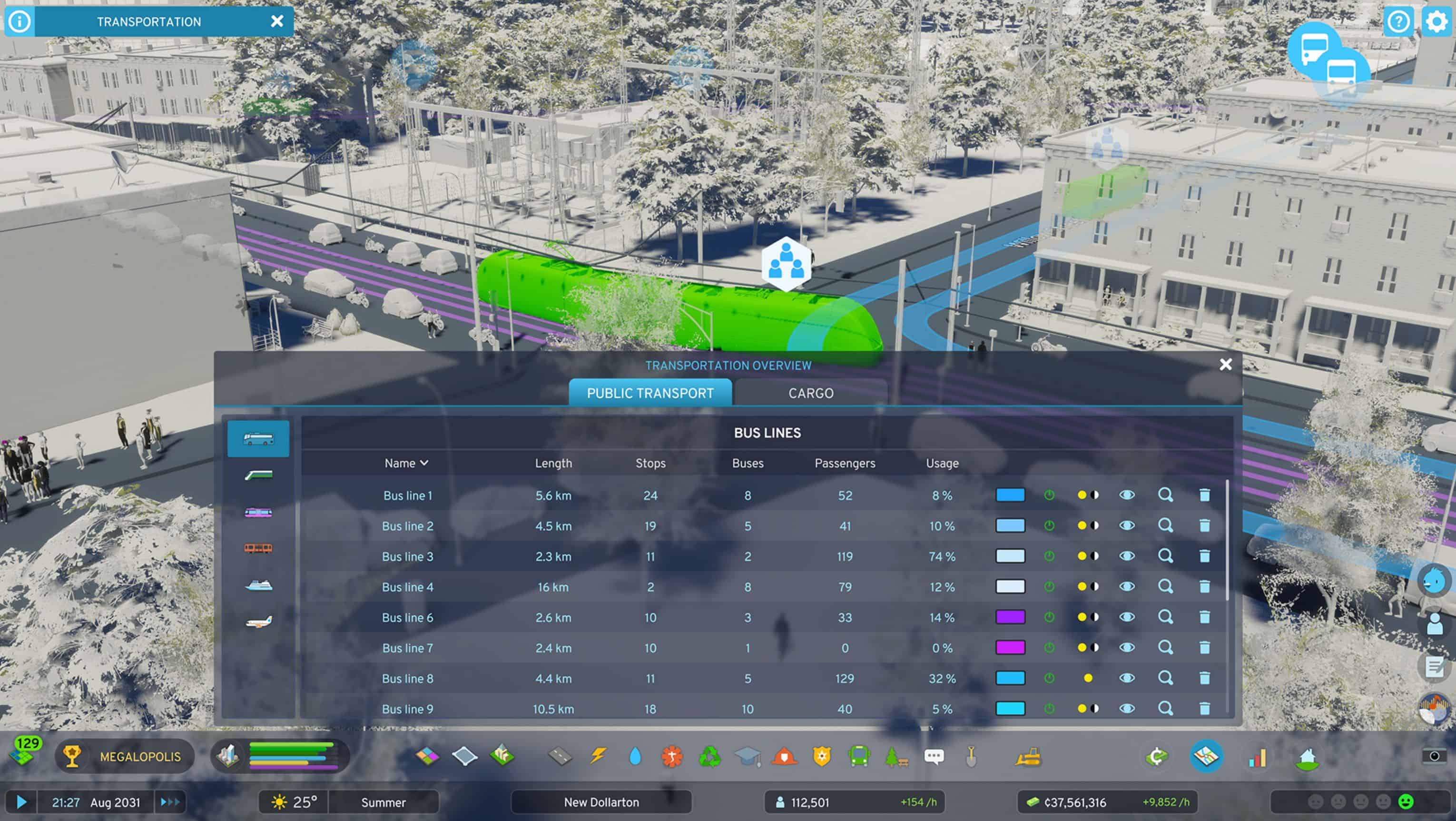
The Transportation Overview can be found in the bottom menu and provides a handy overview of both your passenger and cargo lines
The Line panel provides comprehensive details about the lines, including their length, number of stops, current passenger count, and line usage percentage. In addition, this panel allows you to conveniently rename a line. If alternative vehicle options are available, you can also customize the vehicle model for each line.
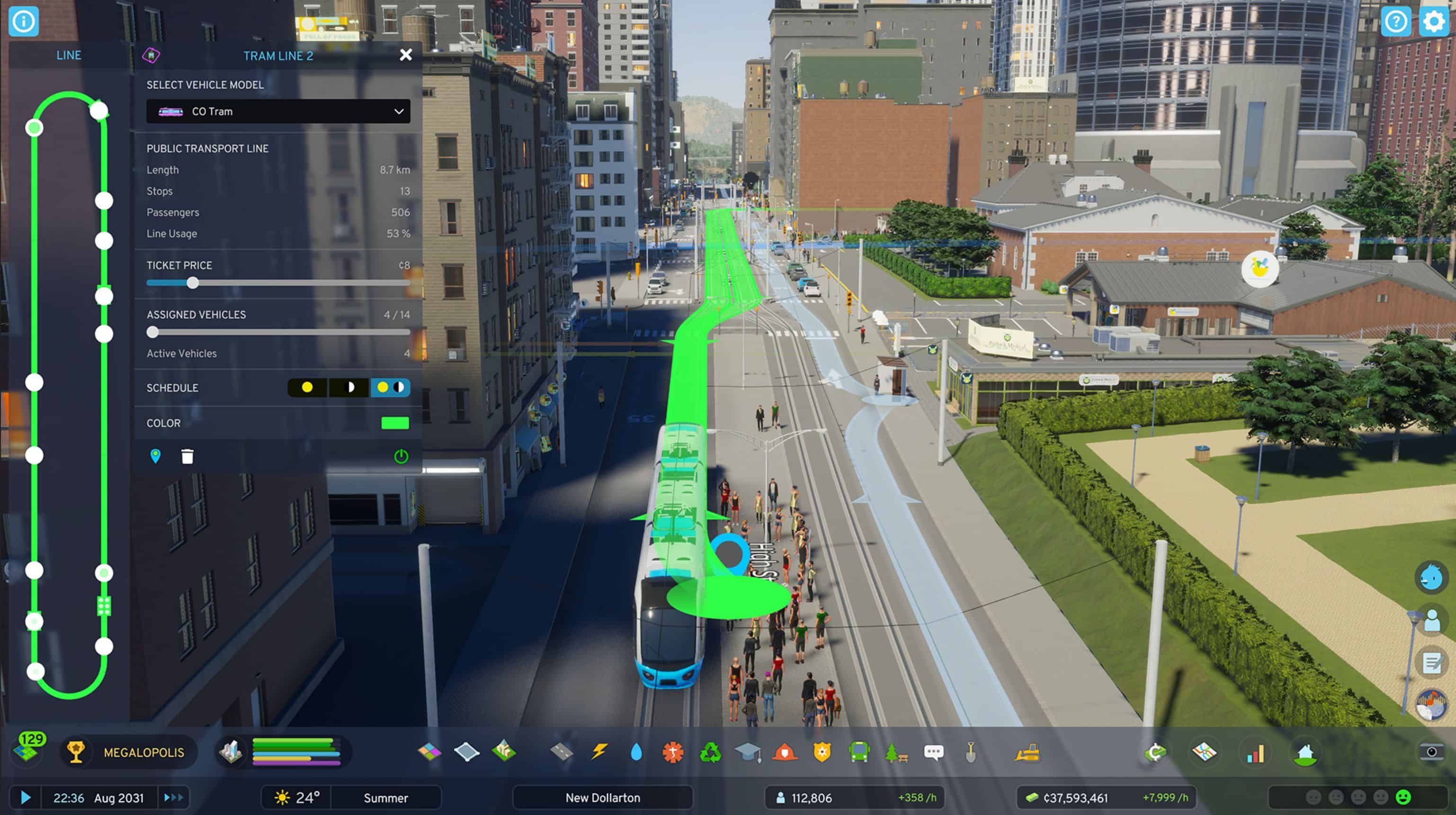
The Line panel provides you with detailed information about the specific transport line
Within the Line panel, you have the opportunity to fine-tune the functionality of your transportation lines. For public transportation lines, the options include adjusting the ticket price, the number of vehicles operating on the line, and the line’s operating hours (daytime, nighttime, or both). For cargo lines, you have the ability to modify the number of vehicles and the operating hours as well.
The ticket price setting directly impacts the pathfinding calculations of citizens. When choosing their travel options, citizens consider factors such as time, comfort, and cost. While time and comfort play important roles in their calculations, the cost can influence their decision between using public transportation or private vehicles.
Modifying the number of vehicles on a line is an effective way to accommodate the changing traffic patterns as the city grows. If a line becomes extremely popular, with a usage percentage close to 100%, increasing the number of vehicles can help alleviate the pressure and reduce passenger wait times at stops and stations. This adjustment also affects the citizens’ pathfinding calculations. Additionally, optimizing the vehicle numbers per line ensures efficient use of the depot’s fleet and guarantees an adequate supply of vehicles for transportation needs.
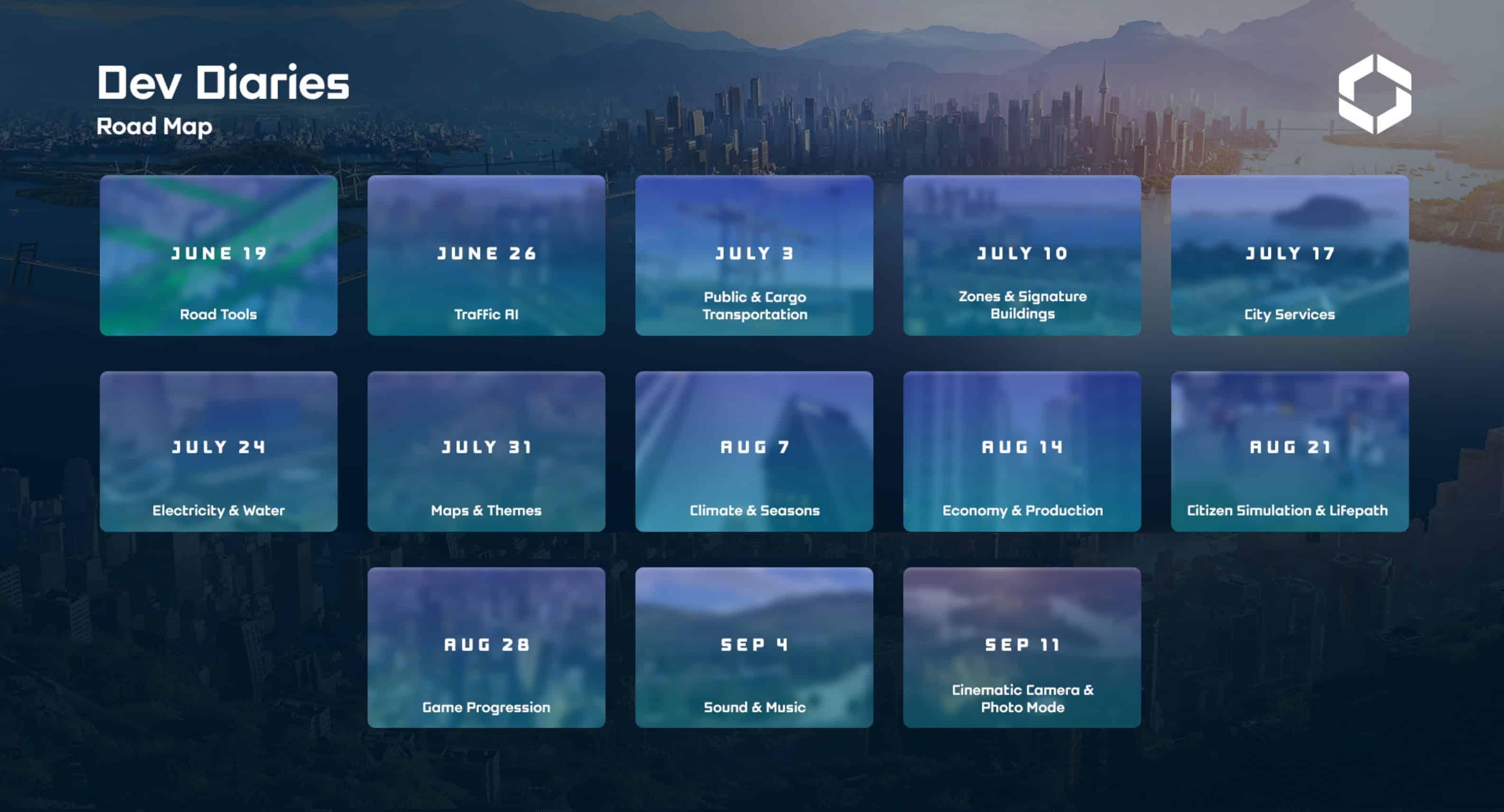
We hope this development diary has provided you with insights into integrating public and cargo transportation into your cities in Cities: Skylines II. We would love to hear about your favorite public transportation option and your anticipation for more control over cargo lines. Share your thoughts in the comments. Don’t forget to check back next week as we delve into Zones & Signature Buildings—the heart of a city.


